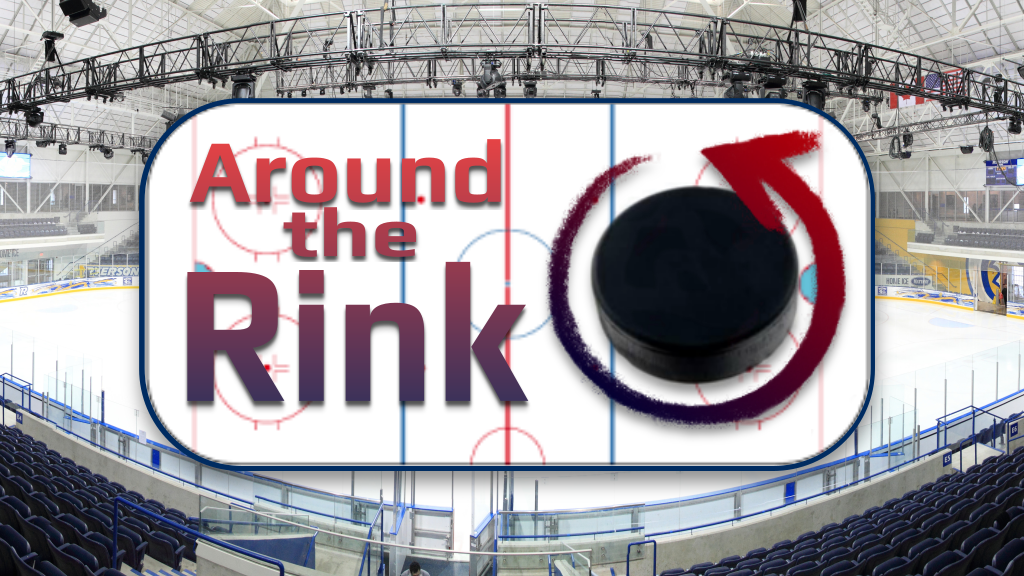Around the Rink

2017-18 USA Hockey Rule Changes
Every four years, the USA Hockey Board of Directors reviews the playing rules. Once reviewed, the board votes on what rules need to be modified and what ones need to be added.
Many rules were observed and discussed this year, but there are four big rule changes that have the hockey world’s attention.
These rule changes will be enforced starting with the upcoming 2017-18 hockey season and will be in effect for the next four years.
Rule 601(e.2) - Abuse of Officials and Other Misconduct, now allows for racial and ethnic slurs to be included in language that is “offensive, hateful or discriminatory in nature.”
Andres Cruz, a Level 3 USA Hockey referee, felt that this ruling change is subjective and will be harder to enforce.
“The problem with the change to this rule is that ‘offensive’ language can be different for every person. If officials instructed to go on the ice and penalize a player for every ‘offensive’ thing that comes out of his/her mouth, the game would last a long time,” Cruz noted.
The second rule change is regarding Rule 612(b) - Face-Off Locations. This rule change states that all face-offs must be dropped at one of the nine designated face-off circles on the ice.
Cruz feels that this rule change makes sense and has already been accepted well across the whole hockey community.
“There was a lot of grey area when it comes to conducting face-offs along the ‘imaginary line’ that we used to use. One of the problems was determining whether the puck was simultaneously tipped before it left the playing area or if it was directed out of play by a player. This new change cleans up a lot of the grey area and helps both players and officials know exactly where the next face-off will be,” Cruz said.
Another part of this rule change, Rule 612(c) - Face-Off Locations, allows the face-off to stay in the attacking zone if the puck deflects off the goal-frame and goes out of play.
Therefore, the team that was sustaining pressure does not lose all the momentum they built up that led to the shot hitting the post and leaving play.
By keeping the face-off in the offensive zone, they can keep the other team on their heels which hopefully leads to more scoring chances.
The most talked about rule change though is Rule 624(b) - Icing the Puck. At the 14U level and below, shorthanded teams can no longer ice the puck without a whistle.
Starting with the 2017-18 hockey season, the referee will blow their whistle and a faceoff will occur in the shorthanded team’s zone.
Unlike the NHL and NCAA levels, players on the shorthanded team will still be allowed to change after the icing.
Cruz notes that most of the reactions to this new rule change have been negative, but coaches in the NHL and higher levels of hockey have accepted the new ruling. “Personally, from the games I’ve refereed so far (at the 14U level specifically), I am a fan of this rule change,” said Cruz.
Before this rule change the shorthanded team had one main strategy to clear the puck out of their zone - to ice the puck as hard as they could, sometimes without even looking.
As long as they got it down the ice, they could keep pressure out of their zone and change their penalty killers. Now players must develop awareness and critical thinking skills to get the puck out.
This means shorthanded teams will have to skate the puck out of the zone, gently chip it out to open ice in the neutral zone or flip the puck high in the air so it gets out of the zone but does not warrant an icing.
“It no longer allows a team who has just broken a rule, and is now being penalized for it, to break another rule (icing the puck) without being punished,” says Cruz.
He also noted that in youth and high school hockey, when the team with the man advantage would dump the puck into the zone to set up their power play, the opposing defensemen would typically beat the forwards to the puck and send the puck down the ice before pressure could be established.
“Now a team on the power play can dump the puck in the zone and set up an offense without having to worry about turning it over right away,” Cruz adds.
The rule change can potentially add more scoring as teams killing the penalty will not have the luxury of firing the puck all the way down the ice.
Teams will have to adapt and this will force coaches to preach to their players the importance of staying out of the penalty box. Players will have to play harder and smarter when down a man.
The new rule changes will be implemented this upcoming season and they should help make the game both more high scoring and fun to play.
Hockey is growing in popularity among today’s youth and hopefully these rule changes continue to positively promote the game we love.
Submission Guidelines
